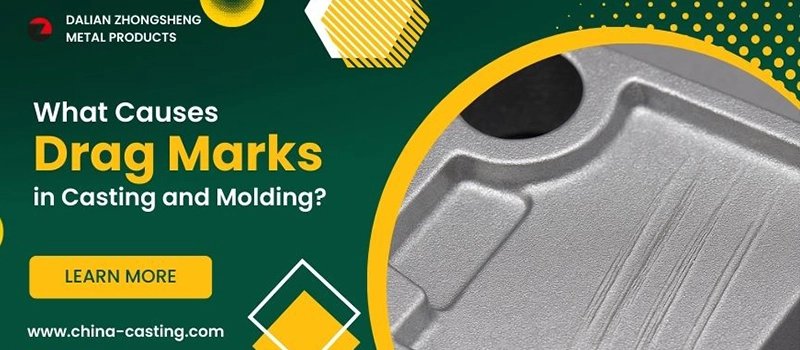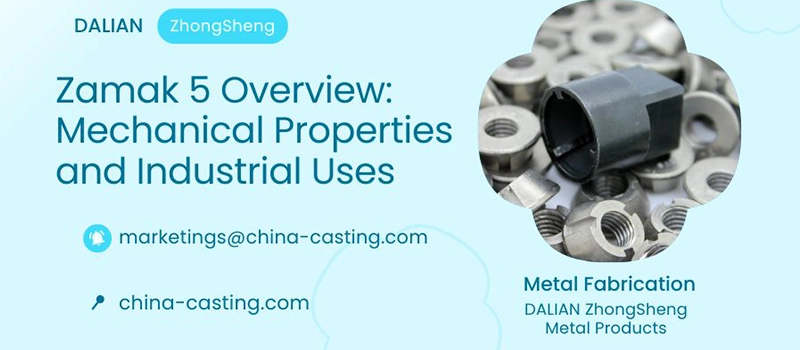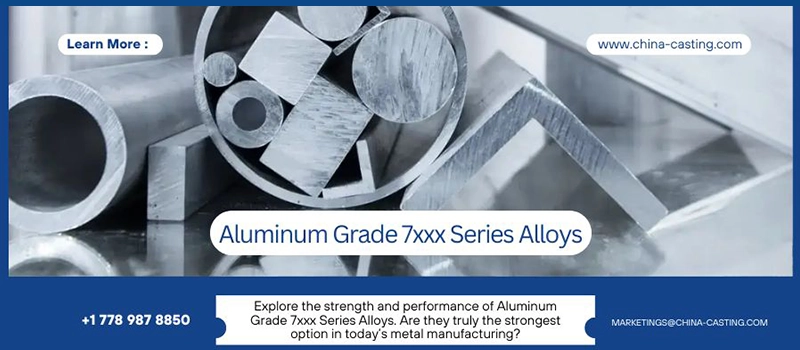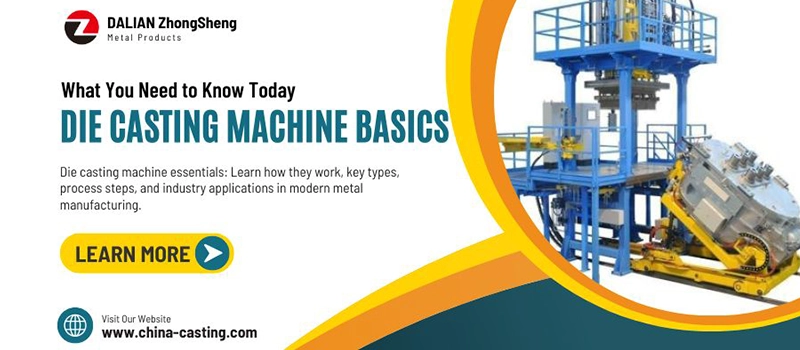Cast iron vs stainless steel — which is the better choice for your industrial application? Should you choose the traditional strength and weight of cast iron, or the sleek corrosion resistance of stainless steel? Will your decision impact not only cost but also production efficiency and product lifespan? These are essential questions facing every procurement officer and engineer.
The short answer is: it depends on your specific needs. In the debate of cast iron vs stainless steel, both materials bring distinct advantages to the table. Cast iron offers excellent compressive strength and vibration absorption, ideal for heavy-duty applications. Stainless steel excels in environments that demand resistance to rust, hygiene, or high temperatures. Your choice must consider mechanical performance, cost, and the conditions in which the metal will be used.
In this article, I’ll guide you through a complete comparison of cast iron vs stainless steel — including their properties, casting behavior, machining performance, cost-efficiency, and application scenarios. If you’re sourcing metal components for agriculture, petrochemical, construction, or automotive projects, this guide will help you make an informed and confident decision.
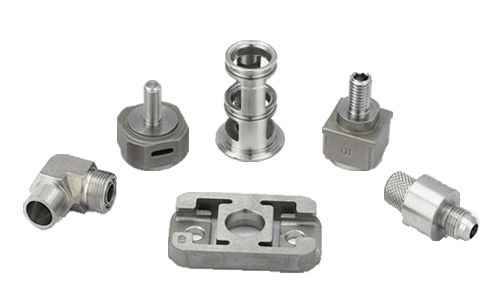
Get a quote now!
Material Basics of Cast Iron vs Stainless Steel
Chemical Composition and Metallurgy Overview
In the comparison of cast iron vs stainless steel, understanding the fundamental chemical composition of each is essential. Cast iron is an iron-carbon alloy, typically containing more than 2% carbon, along with silicon, manganese, and trace elements like phosphorus and sulfur. This high carbon content gives cast iron its signature hardness and brittleness, which makes it ideal for certain types of industrial components that require compression strength.
Stainless steel, by contrast, is an iron alloy with a minimum of 10.5% chromium, which forms a passive oxide layer that prevents rust. Depending on the grade, stainless steel can also include nickel, molybdenum, or titanium, each of which enhances specific properties such as corrosion resistance, temperature resistance, and strength. This key difference in alloying elements is the cornerstone in understanding how cast iron vs stainless steel behaves in real-world applications.
Differences in Microstructure and Implications on Properties
The microstructure of cast iron vs stainless steel greatly affects their industrial performance. Cast iron typically contains graphite flakes (gray iron), spheroidal graphite (ductile iron), or cementite (white iron), all of which increase hardness but reduce flexibility. These graphite structures allow cast iron to absorb vibrations, making it an excellent choice for machine bases, engine blocks, and agricultural housings.
Stainless steel, on the other hand, has a compact, uniform grain structure, especially in austenitic grades like 304 and 316. This structure provides superior ductility, tensile strength, and elasticity — properties that make stainless steel highly effective in high-stress or corrosive environments. So when evaluating cast iron vs stainless steel for automotive or chemical processing components, this structural difference plays a key role.
Overview of Casting and Machining Compatibility
From a production viewpoint, cast iron is generally more castable than stainless steel. It flows more easily in molds, solidifies uniformly, and is often cheaper to machine — particularly in large-batch production. These characteristics make it ideal for complex industrial castings with high precision.
Stainless steel, while harder to cast due to its high melting point and shrinkage, offers better surface finish and hygiene compatibility, making it preferred in food-grade or cleanroom applications. However, machining stainless steel can lead to quicker tool wear and longer production cycles unless proper techniques and tooling are used.
Ultimately, in cast iron vs stainless steel selection, the choice depends on design complexity, production scale, and application conditions.
Mechanical Properties Compared: Cast Iron vs Stainless Steel
Strength, Tensile Resistance, and Load-Bearing Capability
In the realm of cast iron vs stainless steel, strength is one of the most critical differentiators — and the choice can significantly impact how your product performs under load. Cast iron has exceptional compressive strength, which means it holds up very well under heavy, static pressure. This makes it ideal for engine blocks, heavy pump bodies, and agricultural housings that must endure weight without flexing.
However, when it comes to tensile strength — the ability to withstand stretching or pulling forces — stainless steel is the clear winner. Its ductility allows it to flex and recover under dynamic loads, which is vital in components exposed to vibration, bending, or shifting stress. For instance, in piping systems and structural supports, stainless steel offers greater safety under fluctuating forces.
Choosing between cast iron vs stainless steel here depends on whether your component will endure static or dynamic loading. In our factory, we typically recommend cast iron for components like machine beds or mounting brackets, and stainless steel for connectors, pressure vessels, or thin-walled parts that need to resist tension.
Impact Resistance and Brittle Behavior
Another critical distinction between cast iron vs stainless steel is how they behave under impact. Cast iron is inherently brittle — especially at lower temperatures — and is prone to cracking when struck. That’s due to its microstructure: the graphite or carbide inclusions interrupt grain flow and create stress risers, leading to sudden fractures.
Stainless steel, on the other hand, has excellent impact resistance. Its grain structure is more cohesive, and the material can deform without breaking. This is especially true for austenitic stainless steels, which maintain toughness even in sub-zero environments. In sectors like transportation or construction, this characteristic is a decisive factor when selecting materials.
When your application involves risk of sudden shocks — such as tools, vehicle parts, or outdoor fittings — stainless steel is the more reliable choice. If you only need compression resistance in a controlled environment, cast iron remains an economical solution.

Get a quote now!
Wear Resistance Under Abrasive Conditions
Comparing cast iron vs stainless steel in terms of wear resistance depends heavily on the specific alloy or grade used. Gray cast iron has high hardness and graphite content that provides excellent resistance to sliding wear. It’s often used in brake components, pump rotors, or gears, where parts are in constant contact and abrasion is a concern.
Stainless steel offers solid wear performance as well, particularly in hardened or martensitic grades. However, in abrasive environments with dry contact, cast iron can outperform stainless steel due to its self-lubricating graphite content. Conversely, in wet, corrosive, or acidic environments, stainless steel maintains its structure far longer without pitting or degradation.
We often recommend cast iron for mechanical parts operating in dry, abrasive environments, and stainless steel for marine, chemical, or hygiene-critical applications.
Thermal and Corrosion Performance: Cast Iron vs Stainless Steel
Heat Conductivity and Thermal Expansion
When evaluating cast iron vs stainless steel for heat-related applications, thermal conductivity becomes a critical performance metric. Cast iron has significantly higher thermal conductivity than stainless steel, which means it can transfer heat more efficiently. This property makes it a preferred choice for parts like engine components, stove grates, or industrial cooktops that require rapid and even heat distribution.
On the other hand, stainless steel has lower thermal conductivity, but it compensates with better performance in environments where thermal cycling and temperature variation occur. It expands more uniformly, and many stainless steel grades can handle high heat without deforming or losing mechanical integrity. In systems involving heat exchangers or fluid transfer, this stability is a valuable advantage.
The choice between cast iron vs stainless steel here depends on whether thermal conductivity or heat tolerance is more critical. Cast iron excels when consistent heat dispersion is required, while stainless steel performs better in fluctuating or corrosive high-temperature settings.

Resistance to Rust, Chemicals, and Environmental Exposure
Corrosion resistance is where stainless steel clearly outperforms cast iron. Thanks to its chromium-rich composition, stainless steel forms a passive oxide layer that resists rusting even in the presence of moisture, salt, or chemicals. This makes it ideal for marine applications, outdoor installations, and systems exposed to acids or bases.
Cast iron, by contrast, is prone to oxidation, especially if not coated or treated. In humid or outdoor conditions, it can rust rapidly unless protected by paint, galvanizing, or porcelain enamel. However, with the right surface treatment, cast iron can be adapted to a surprising range of environments, although it requires more ongoing maintenance.
When corrosion resistance is a top priority — such as in valves, pipelines, food-processing equipment, or chemical tanks — stainless steel is generally the safer, longer-lasting choice. But for enclosed, dry environments with minimal exposure, cast iron can still offer excellent value and reliability.
How Coatings and Surface Treatments Affect Performance
One way to close the gap between cast iron vs stainless steel in corrosion resistance is through surface coatings. For example, porcelain-coated cast iron is commonly used in sinks, bathtubs, and grates, combining iron’s strength with a smooth, rust-resistant surface. However, these coatings can chip or crack over time, leading to corrosion beneath the surface.
Stainless steel, by contrast, doesn’t require surface coatings to resist rust. Its protection is intrinsic to its composition, which means even scratches or wear do not compromise its corrosion resistance. That’s why it’s preferred in environments that require frequent cleaning, sanitation, or abrasion.
In applications where aesthetics and hygiene are important — such as kitchen sinks, food equipment, or bathroom fixtures — stainless steel provides long-term durability with minimal maintenance, while coated cast iron offers a heavier, more traditional alternative at a lower price.
Manufacturability – Machining, Casting & Processing
Casting Complexity and Mold Behavior
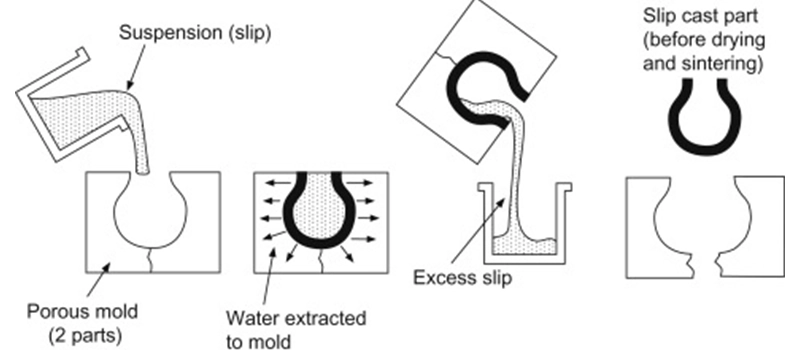
In the comparison of cast iron vs stainless steel, casting behavior is a key factor in determining manufacturing efficiency and production cost. Cast iron is widely regarded as easier to cast due to its excellent fluidity, low shrinkage, and predictable cooling patterns. These characteristics make it highly suitable for intricate mold designs, thin-walled structures, and large-volume production.
Stainless steel, on the other hand, is more challenging to cast. Its higher melting point, increased viscosity, and greater shrinkage rate make it less forgiving in the mold. This often requires advanced casting techniques, specialized molds, and stricter temperature controls, which can increase lead times and production costs.
For manufacturers prioritizing casting precision and speed — especially in medium to large production runs — cast iron typically offers better economy and reliability. Stainless steel may still be preferred when corrosion resistance or surface finish takes precedence over ease of casting.
Machinability and Tool Wear
When it comes to machining, cast iron holds a strong advantage in terms of tool life and cutting efficiency. Its graphite microstructure acts as a natural lubricant, which reduces friction and wear on tools. Machining cast iron tends to produce short, broken chips and leaves behind a good surface finish, especially in gray iron grades.
Stainless steel, however, presents more challenges. Its toughness and tendency to work-harden can lead to longer machining times and accelerated tool wear. It often requires high-performance cutting tools and optimized feed rates to maintain precision and surface integrity. Additionally, stainless steel tends to generate long, continuous chips, which can interfere with automated machining processes.
In industries where high-speed machining and tooling efficiency are priorities, cast iron generally delivers faster turnaround and lower machining costs. Stainless steel is still the go-to material when final product quality, hygiene, or resistance to mechanical stress outweighs manufacturing complexity.
Welding, Joining, and Fabrication Compatibility
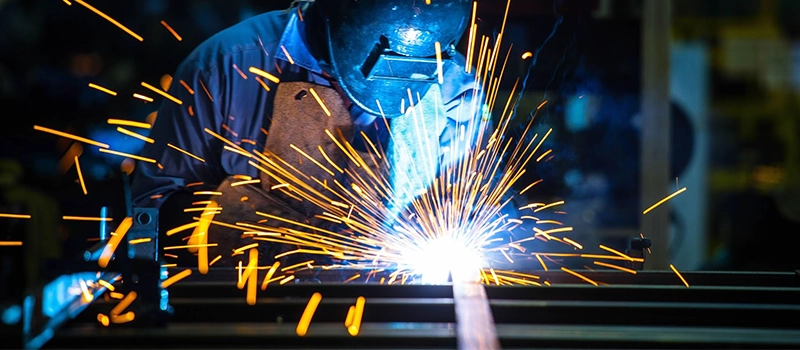
The weldability of cast iron vs stainless steel also reveals important trade-offs. Stainless steel, particularly austenitic grades like 304 and 316, offers excellent weldability. It can be joined using various techniques — TIG, MIG, or stick welding — without losing mechanical or corrosion-resistant properties, as long as proper filler materials and post-weld treatments are applied.
Cast iron, however, is notoriously difficult to weld. The high carbon content leads to cracking, brittleness, and poor fusion, especially if proper preheating and slow cooling aren’t followed. While welding cast iron is not impossible, it is often avoided in favor of mechanical fastening or brazing, which are more stable and cost-effective.
For products that require frequent modifications, repairs, or custom fabrication, stainless steel offers greater flexibility. Cast iron is best used in applications where welding is minimal or where components are manufactured as monolithic castings without joints.
Application by Industry: Cast Iron vs Stainless Steel
Automotive Industry
In the automotive sector, the debate of cast iron vs stainless steel comes down to where strength, heat resistance, and cost are most critical. Cast iron is commonly used for engine blocks, brake calipers, and exhaust manifolds due to its superior compressive strength and excellent vibration damping. These parts often operate under heavy loads and high temperatures, where cast iron provides long-lasting durability.
Stainless steel also finds its place in the automotive world, especially in exhaust systems, fuel lines, and decorative trim. Thanks to its corrosion resistance and sleek appearance, stainless steel is often used in applications where exposure to moisture, road salt, or acidic exhaust gases is a concern. In high-performance or luxury vehicles, stainless steel may be chosen over cast iron to improve both longevity and aesthetics.
The decision in automotive applications often balances cost and performance. Cast iron wins in heavy-duty, high-heat scenarios, while stainless steel excels in corrosive or visually exposed areas.
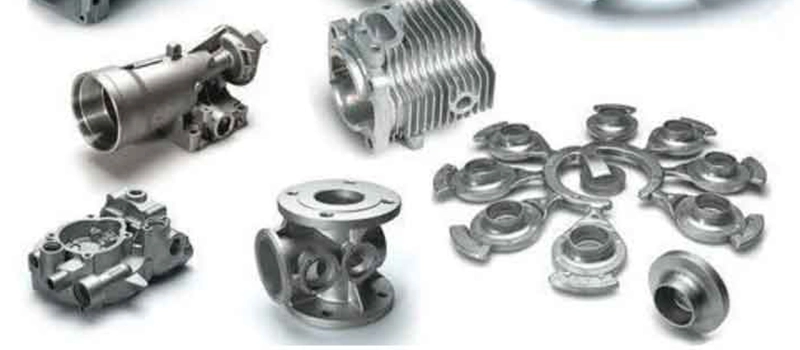
Agricultural Equipment
When it comes to farming machinery and irrigation systems, both cast iron and stainless steel are heavily used, but for different reasons. Cast iron is ideal for gear housings, pump bodies, and tractor components where shock absorption and mechanical stability are essential. It stands up well to repetitive stress and coarse working conditions typical in the field.
Stainless steel is preferred in fertilizer sprayers, milk tanks, and irrigation valves, where chemical exposure and hygiene matter. Its corrosion resistance is crucial when dealing with fertilizers, water treatment chemicals, and animal byproducts.
In short, cast iron is often the backbone of mechanical parts, while stainless steel supports the fluid handling and sanitary components in modern agricultural operations.
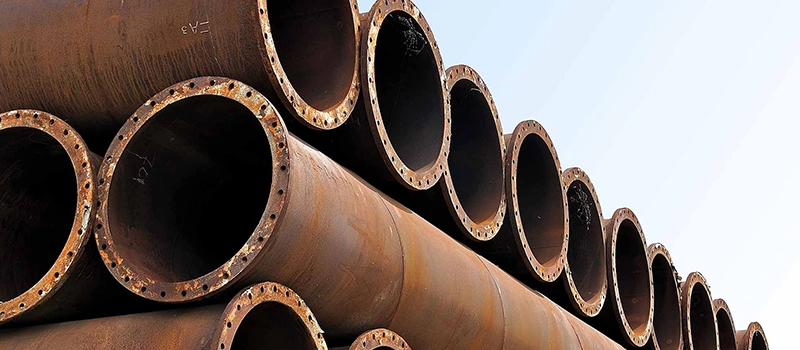
Construction and Structural Applications
In construction, both metals are used for structural and architectural purposes. Cast iron is found in columns, brackets, pipe fittings, and drainage systems, where its rigidity and load-bearing capacity are valued. Historic buildings and infrastructure often used cast iron due to its fire resistance and strength.
Stainless steel, however, has grown in popularity for handrails, wall panels, fasteners, and facades, offering not only strength but also corrosion resistance and low maintenance in outdoor or marine environments. It’s also widely used in HVAC systems, expansion joints, and support brackets that demand clean finishes and resistance to condensation or industrial gases.
Here, the choice between cast iron vs stainless steel hinges on exposure to moisture and visual requirements. Cast iron is tough and cost-effective for concealed, structural elements, while stainless steel is ideal for visible or weather-exposed applications.
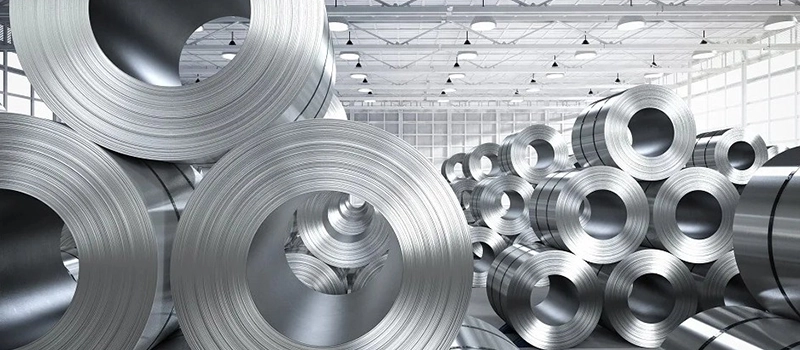
Petrochemical and Chemical Industries
In chemical plants and refineries, corrosion resistance becomes non-negotiable. Stainless steel is dominant in this field due to its ability to withstand acids, bases, and high-pressure steam. It’s used for tanks, valves, pipe systems, and pumps in environments that would quickly degrade cast iron.
Cast iron is still used for specific pump housings or large valves in non-aggressive environments, especially when cost control is crucial and coatings can be applied to improve durability. However, its use is limited in areas where prolonged chemical exposure is expected.
In summary, stainless steel is the standard material for most petrochemical applications, while cast iron may be used strategically where conditions are less harsh or where economic constraints exist.

Cost Efficiency and Lifecycle Considerations: Cast Iron vs Stainless Steel
Raw Material and Production Costs
When it comes to cast iron vs stainless steel, one of the most immediate differences buyers notice is cost. Cast iron is generally cheaper to produce due to its lower material and energy requirements. It melts at a lower temperature, flows easily in molds, and is widely available, making it highly cost-effective for bulk industrial parts.
Stainless steel, on the other hand, includes expensive alloying elements such as chromium and nickel. It requires higher melting points and more complex processing, especially in casting and machining. This drives up both the per-unit price and the production timeline. In mass production or for heavy components, the material cost difference between cast iron vs stainless steel can be significant.
Still, upfront pricing doesn’t tell the whole story — the total lifecycle cost must also be factored in when evaluating cast iron vs stainless steel for long-term value.
Maintenance, Repair, and Replacement Cycles
Another key aspect of the cast iron vs stainless steel decision is how each metal performs over time. Cast iron components, while affordable and strong, are more susceptible to corrosion and brittleness. In environments with moisture, chemicals, or thermal shock, cast iron may require coatings or regular maintenance to prevent rust and cracking.
By contrast, stainless steel offers excellent long-term durability. It naturally resists rust and chemical degradation, making it ideal for outdoor, marine, or sanitary applications. Its structural integrity remains stable under wide temperature ranges and over time — reducing the need for frequent repairs or replacements.
So, in the lifecycle cost comparison of cast iron vs stainless steel, stainless steel may come out ahead in many environments, even if it costs more initially.
Need Help? We’re Here for You!
Total Cost of Ownership and ROI
For industrial buyers, choosing between cast iron vs stainless steel often comes down to total cost of ownership (TCO). Cast iron wins when the part is large, static, and housed in a dry or protected setting. But stainless steel offers a better return on investment when exposure to harsh conditions, maintenance costs, or hygiene requirements are critical.
For example:
Cast iron is perfect for structural frames, machine beds, and pump housings in dry environments.
Stainless steel is ideal for valves, sinks, fluid systems, and outdoor equipment where corrosion and hygiene are concerns.
Making the right choice between cast iron vs stainless steel ensures optimal performance, cost efficiency, and peace of mind throughout your product’s service life.
Choosing the Right Metal for Your Project: Cast Iron vs Stainless Steel
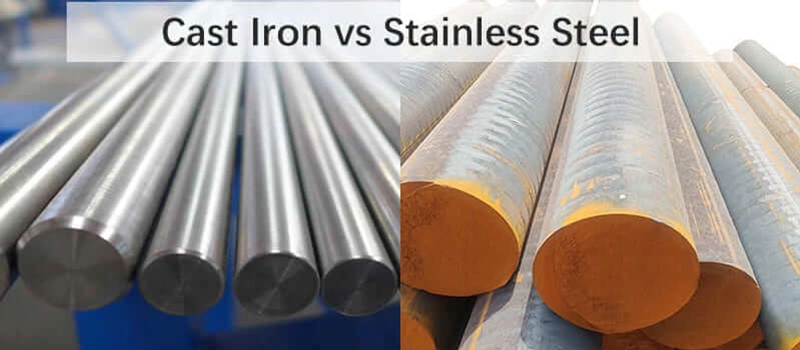
Functional Requirements vs Material Trade-Offs
When selecting between cast iron vs stainless steel, the first consideration should always be functionality. What kind of stress will the component endure — compression, tension, vibration, or thermal cycling? Will it be exposed to corrosive elements like water, chemicals, or extreme heat?
If your design requires strong load-bearing capacity, minimal deformation, and vibration damping, cast iron is often the better choice. It performs exceptionally well under static loads and offers great dimensional stability. On the other hand, if the part will operate in a corrosive or highly dynamic environment, stainless steel offers superior resilience, longevity, and cleanliness.
These trade-offs are central to engineering decisions — and understanding the core strengths of each material is the starting point of any successful industrial design.
Environmental and Operating Conditions
The operating environment is where the cast iron vs stainless steel decision becomes especially nuanced. For example:
- Dry indoor environments: Cast iron is reliable, affordable, and easy to cast.
- Moist, corrosive, or sanitary conditions: Stainless steel is better suited, especially for parts that require minimal maintenance and long-term exposure resistance.
- Outdoor exposure or marine conditions: Stainless steel offers a significantly longer lifespan and less degradation.
- High-impact settings: Stainless steel’s ductility and impact resistance provide added safety.
At Dalian ZhongSheng Metal Products, we routinely evaluate these variables during the design consultation phase to ensure that our customers select the most cost-effective material without sacrificing durability or function. Material selection is not just about performance — it’s also about long-term value in specific industrial settings.
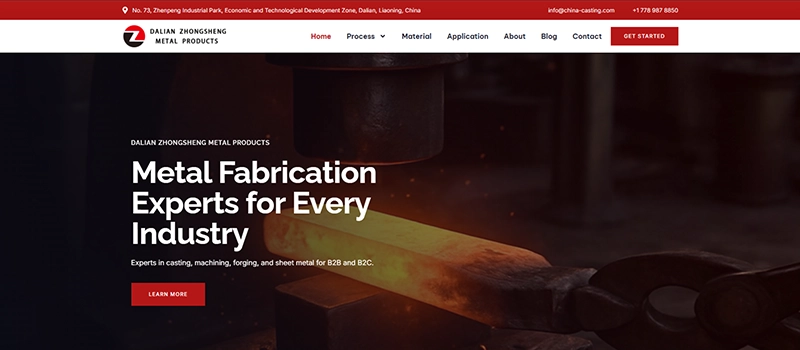
Our Recommendation Approach
Instead of promoting a one-size-fits-all solution, our approach is to analyze each project’s material needs based on its technical and environmental demands. Sometimes cast iron is the smarter, more economical option; other times, stainless steel’s long-term reliability justifies the extra cost.
As a manufacturer with decades of metal casting and machining experience, we’ve worked across industries — from automotive to petrochemical — and have learned that the choice between cast iron vs stainless steel must be grounded in both application logic and material science.
Whether you’re designing new components or replacing existing parts, starting with the right material is essential to avoid delays, failures, and unnecessary expenses. Proper selection during the planning stage will pay dividends throughout the entire lifecycle of your equipment.
Conclusion – A Manufacturer’s Perspective
In the debate of cast iron vs stainless steel, there’s no universal winner — only the right choice for the right application. Each material offers unique strengths that suit specific environments, performance demands, and budget constraints.
At Dalian ZhongSheng Metal Products, we believe that smart material selection is the foundation of reliable manufacturing. Whether you need cast iron’s stability or stainless steel’s resilience, the key is understanding your project’s needs from the start.



